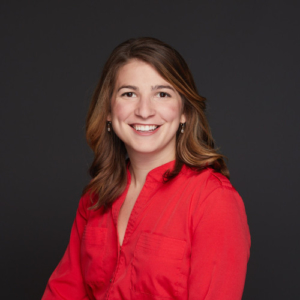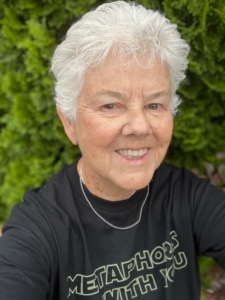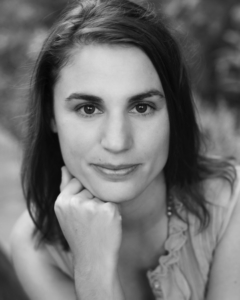The Underrated Magic of “Telling” In Creative Nonfiction
by Meghan Modafferi
Surely you’ve heard the common refrain, “show, don’t tell.” And it’s good advice, I’ll admit, as most of us are awfully used to the telling, and could use some practice with the showing. But in my view, the real magic comes when we sneak the two together like teenagers under the bleachers, interlaced so imperceptibly that even the most persnickety writing teacher couldn’t parse them entirely.
Because if you look closely enough, there are metaphors in the real world. If you observe, for example, that Riker’s Island is the largest jail on the continent yet it’s missing from most New York City maps, that’s an observation, yes. The empty space on the map is something you could show me. But it tells me something, too. There’s symbolic meaning embedded in the geography, in the cartography, of this place. And while perhaps you shouldn’t tell me exactly what to think about it, surely you are telling me something through the carefully selected details you chose to surface. It’s a tell about you, in other words.
We can never represent every detail, after all. So, we show a snapshot of reality — and we show, inadvertently or not, a glimpse into ourselves. And what a gift that is — to be allowed for a moment to see through your eyes.
So please: tell me. Tell me a little about what it feels like back there, behind those eyes, looking at the same thing as me, while inevitably looking at something different. Tell me what it brings up for you. Show me not only the scene in front of us, but the scene from ten years ago when you were there with your dad, who’s since passed away. Tell me the history of this place, and let me in on the questions you’re still mulling over despite weeks of research.
Creative nonfiction, and perhaps all writing to some extent, is about this: generosity with what we choose to show, and tell, about ourselves.
Meghan Modafferi is a writer and multimedia storyteller whose work has been published by National Geographic, Slate, and the NPR affi liate WUNC. She has taught writing and podcasting courses at Georgetown University.
Learn From Sarah: In difficult times, writing about ordinary things that delight us can be a radical act of care. Inspired by poet Ross Gay’s The Book of Delights, this class will focus on creative nonfiction writing, grounded in careful observation of the world and its little pleasures. We will explore several examples of the form with special attention to the balance between darkness and light, showing and telling. Participants will be guided through prompts to support the development of their own original work. Register here.
Trees as Muse
by Irene Honeycutt
Needing to feel grounded, I sit outside, an acorn in my hand. A slight breeze brushes my face. I loosen my grip on the acorn; and it feels lighter, as if it might mysteriously dissolve and flow into my veins.
Does this acorn hold within its DNA the tiny thing the size of a hazelnut that Julian of Norwich held in her palm? Julian writes that she “looked at this with the eye of my soul and thought: ‘What can this be?’” Such a small thing! Denise Levertov would later address Julian in one of her dialogues: “…you ask us to turn our gaze/inside out, and see a little thing,/the size of a hazelnut,/and believe it is our world?” And in her “Notes on Organic Form,” Levertov seals her own belief by seeing the act of writing as a communion of everything (no small thing): “…writing is not a matter of one element supervising the others but of intuitive interaction between all the elements involved.” The genesis, then, of the written work of art emanates from paying attention to the world. O Taste and See, Levertov implores. This requires the deep gaze, not the passing glance.
*****
How far we have come in recognizing the interconnectedness of all things (beings). Still, mystery remains. “On the last day of the world I would want to plant a tree,” W. S. Merwin writes. And Mary Oliver has said that she could almost say trees saved her. Poems guide, rage, console, inspire, bear witness. Can we say the same of trees?
One recent morning, I opened the back door, expecting the usual heat wave. My dog, as surprised as I by the brisk air, began running laps round and round the backyard and I quickly went and stood close to my evergreen tree. I parted a few of the branches and peeked inside. Some gift was always there. As with the giving tree in To Kill a Mockingbird. This time a silky hammock spun overnight held the morning’s catch: a few drops of dew and a sparkle of sunlight and a little something for the spider. I let the branches close on this secret space. And thought of Suzanne Simard’s Finding the Mother Tree which I’d been reading the night before, stunned by the brilliance of her style in conveying the complicated scientific results of her studies of how trees develop elaborate systems of communication. Understories. Interwoven among the trees are branches of her personal journey with cancer. In the forests, she confronts fear; finds joy and courage. Her memoir reminds me of how poets and fiction writers convey similar themes. In one of my favorite short stories taught by a beloved teacher when I was a college sophomore, E. B. White’s character notices “the second tree from the corner” and comes to an epiphany.
Go find your tree. Write about it.
Trees as Muse in Print
Here’s an example of a writer using trees as muse: “In The Petrified Forest” by Dan Musgrave. You can submit your own nonfiction to Outpost19’s tree-tethered nonfiction anthology, Rooted, here.
Irene Blair Honeycutt is an award-winning teacher and poet. Her fourth poetry book, Beneath the Bamboo Sky (Main Street Rag, 2017), is sub-titled Poems and Pieces on Loss and Consolation. Irene’s kinship with trees began in her childhood in Florida where she built and retreated to her palm hut. She still meets with the woods and enjoys writing time in her mountain cabin. Her work has been published by journals, including Nimrod, Southern Poetry Review, The Southern Poetry Anthology: VII, Black Moon Magazine, Kakalak and Virginia Quarterly. She founded Central Piedmont Community College’s Sensoria, mentors writers, and is completing her fifth poetry manuscript.
Learn From Irene: The tree as nurturer, witness, listener—a source of terror, even—has drawn poets through the ages to reflect on its Mystery. In the first of our two meetings, we’ll explore a variety of “tree” writings and discuss how these pieces reflect our humanness. Then, through a visualization writing prompt that takes us deeper into our relationship with them, we’ll invoke trees as muses to inspire our intuitive writing processes. During our second meeting, participants will be encouraged (not pressured) to share short writings inspired by the prompt.
Learn more and register here.
You Are Your Book’s Best Seller
by Kathy Izard

Many aspiring authors claim to despise marketing. They just want to work on their craft and write a great book, and hope that will be enough to make it hit the bestseller list. They spend years taking writing classes, searching for an agent, and working on a book contract thinking that someday, someone else will do all that social media and marketing stuff.
The truth is, even if you get a contract with one of the Big Five publishers, there will not be a team of magic marketing fairies selling your book. Publishers still expect YOU, the author, to be engaging with potential readers through social media (Instagram, LinkedIn, Facebook, and Twitter) and speaking engagements. Unless you are already John Grisham or Michelle Obama you are not likely to go on a nationwide book tour or get booked on the morning TV shows.
I say this not to depress you but to empower you. If you have a story that you want to tell, it is your job to both write it and sell it. Hopefully, you have already spent years drafting a polished story and understand who your audience might be. But even if you have only written the first draft and have no idea who might read it, now is time to begin crafting your business plan. As the author, you are the best person to understand who will be looking to read your romance novel or who needs the advice in your nonfiction book.
Begin to understand how your book matches your readers’ needs by asking yourself these three questions:
- Why did you write the book? Take time to write about this and be honest with yourself. Maybe it is just pure entertainment for you and your reader or maybe there is a felt need you think your book meets for potential readers. Understand why you wrote the book and what your expectations might be for sales.
- Who is your ideal reader? Get specific. What are the demographics of this group, where do they shop for books, and what format do they read (e-books, audiobooks, paperbacks or hardbacks)? You wan to make sure what you publish is what they buy.
- Where can you begin connecting with your type of ideal reader—either virtually or in person? Is it Instagram or LinkedIn? Are there Facebook groups you can join to begin meeting readers before your book launches? Are there in-person groups in your city—book clubs, service clubs, faith groups—that match your book’s theme that you can connect with?
Make these basic questions the starting point for writing the business plan for selling your book. Whether you have a traditional publisher or you independently publish, you will need a good outline of who are trying to sell to and how you will reach them.
You have worked hard to write a manuscript you care about. Now give an equal amount of effort understanding how to get that book to readers who will love it as much as you do.
Kathy Izard is the author of three books, The Hundred Story Home, The Last Ordinary Hour, and A Good Night for Mr. Coleman. She connects with her readers on Instagram (@kathyizardclt) and loves helping writers get their words in the world.
Learn from Kathy
Paths to Publishing: Self-Publishing Start to Finish. Thursday, October 6, 2022, 6:00-8:00 pm. So, you’ve finished a manuscript and have made the decision to self-publish. Where do you start? Join us as Kathy Izard walks you through 10 steps to putting your words in the world. From purchasing your own ISBN number to ordering author copies, Kathy can answer all your questions about becoming a published author of adult or children’s books. Register here.
How to Write About Sex
by Sarah Creech
Good sex in fiction relies on powerful description skills, but what makes it “good” has much more to do with character and conflict than the sensory experience of sex on the page as mere titillation. Sex is always a power dynamic in story with various parties claiming power by different methods and for different reasons. Good sex functions as character development and deepens a character’s psychological richness on the page. Good sex creates subtext and interiority in a story.
Bad sex in fiction ignores all of these important elements of craft and instead focuses on description for description’s sake. Often that description is overwrought or straining for the visual as a stand-in for real yearning and complex desire. Each year, the Literary Review announces its Bad Sex in Fiction award to draw attention to the cliché ways sex is sometimes presented in story. More specifically, “The purpose of the prize is to draw attention to poorly written, perfunctory or redundant passages of sexual description in modern fiction.” (Check out some recent award winners and see if you can spot any reasons for why those particular works were chosen for so dubious an honor.)
But all jokes aside: sex in fiction is a very serious craft concern for storytellers. When and how to invite the reader’s mind onto the page to participate in the imaginary work of scene building is critical. Not all sex is romantic or erotic. Some sex is taboo, violent, without consent. A writer handles difficult material through skillful craft choices.
Sarah Creech is the author of two novels, Season of the Dragonflies and The Whole Way Home. Her short fiction and essays have appeared in various publications, including The Cortland Review, Writer’sDigest. com, StorySouth, and Literary Mama. She lives in North Carolina with her husband and children and teaches at Queens University of Charlotte.
Learn From Sarah: Want to write great sex scenes that don’t just titillate the reader but also reveal character and complicate the plot? Join us for “Sex (How to Write About it Well)” at Charlotte Lit, Thursday, September 29, from 6:00 to 8:00 pm. In this course we will study the best strategies to create good tension in a sex scene and learn to avoid the techniques that might get you nominated for the infamous Bad Sex in Fiction award. Learn more and register here.
Why “The Iliad” Still Matters
by Jeffrey Thomson
 The Iliad is a book of transitions; it is a fundamentally a book of liminal moments. This is a story from the basement of history—from the moment when we began the movement from an oral storytelling culture to a culture of written literature. It establishes many of the characters and tropes of the modern literary world, while living up to almost none of the norms. It is a challenging, sprawling, and difficult text that is likewise small and intimate in its essential movement. Its characters and heroes interact with gods and Fate but play out an ultimately human story.
The Iliad is a book of transitions; it is a fundamentally a book of liminal moments. This is a story from the basement of history—from the moment when we began the movement from an oral storytelling culture to a culture of written literature. It establishes many of the characters and tropes of the modern literary world, while living up to almost none of the norms. It is a challenging, sprawling, and difficult text that is likewise small and intimate in its essential movement. Its characters and heroes interact with gods and Fate but play out an ultimately human story.
The Iliad takes place during the Trojan War, but it is not about the Trojan war. Rather it is about the making of a person—Achilles. We watch as he moves from rage to pity. From unyielding to anything but the direct commands of the gods to yielding to the will of another human being. Achilles is “divinely” selfish in the beginning of book one, but by the end Achilles has learned to feel pity for another mortal. His final acts of grace and generosity show that he has abandoned his selfish anger and found a connection to another human being.
For writers, The Iliad is an unending fountain of characters and moments that can be plumbed and investigated, written and rewritten. It is the text that gave us the world’s first fan fiction—The Aeneid—and continues to provide grist for that mill (Madeline Miller’s The Song of Achilles, the film Troy, etc.). In a moment of—again—invasion and war, reading and talking about Homer’s classic war story will let us—once again, as well—think about what it ultimately means to be a human being.
Jeffrey Thomson is a poet, memoirist, translator, and editor, and the author of 10 books including Half/Life: New and Selected Poems from Alice James Books, the memoir fragile, The Belfast Notebooks, The Complete Poems of Catullus, and the edited collection From the Fishouse. His newest book is Museum of Objects Burned by the Souls in Purgatory. He has been a National Endowment for the Arts Fellow, the Fulbright Distinguished Scholar in Creative Writing at the Seamus Heaney Poetry Centre at Queen’s University Belfast, and the Hodson Trust–John Carter Brown Fellow at Brown University. He is currently professor of creative writing at the University of Maine Farmington.
Read The Iliad with Charlotte Lit: Join us for “Reading The Iliad in Wartime” with Jeffrey Thomson. Over six sessions beginning September 20, we will read and discuss Homer’s original classic and think about the way it speaks to our time and the way other writers have used this story to illuminate theirs. This is a “Zoom Plus One” event — when you register you can bring a friend for free! More information and registration here.



